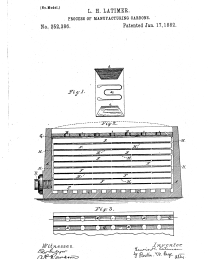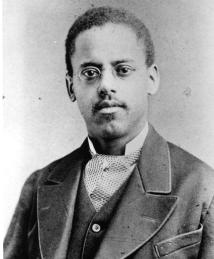Lewis Latimer
Lewis Latimer invented a method for producing a more durable carbon filament, making incandescent lighting practical and affordable for consumers.
Latimer was born in Chelsea, Massachusetts, the son of former slaves. He enlisted in the Union Navy during the Civil War and was a lieutenant in the Massachusetts Volunteer Militia. Working as a self-taught draftsman after the war, Latimer made the drawings for Alexander Graham Bell's first patent application for the telephone. He made his most important innovation in electric light technology while working for the United States Electric Lighting Co. in the 1880s.
Latimer's design produced a carbon filament that was more durable and longer lasting than earlier filaments. As a result, incandescent light bulbs became affordable to more consumers. Safer than gas lamps, and less harsh than arc lights, incandescent bulbs transformed the average American home after nightfall.
Despite the societal roadblocks a black man faced in the late 19th century, Latimer successfully oversaw the setup of electric lighting plants in the United States, Canada and England. After leaving U.S. Electric Lighting, Latimer worked for Thomas Edison and became a patent investigator and expert witness for the Edison Electric Light Co.

